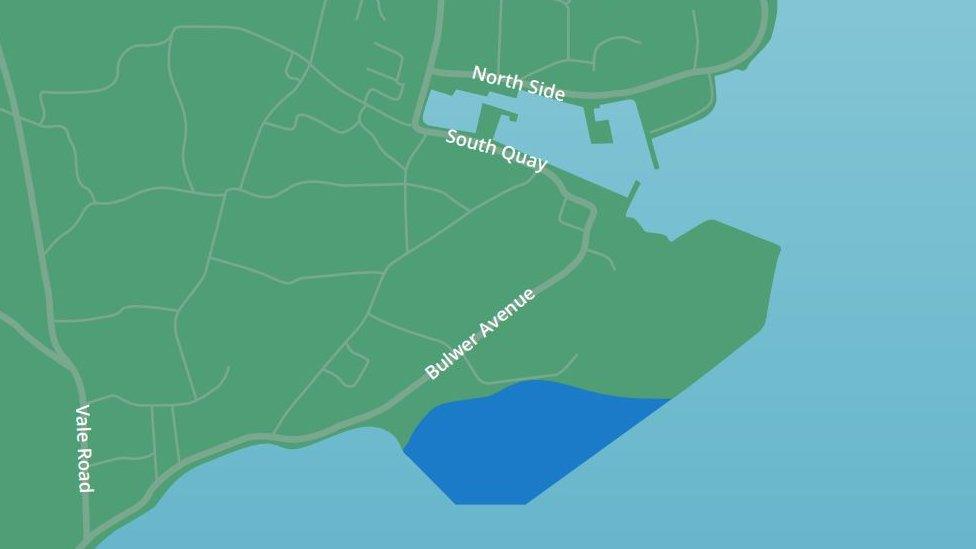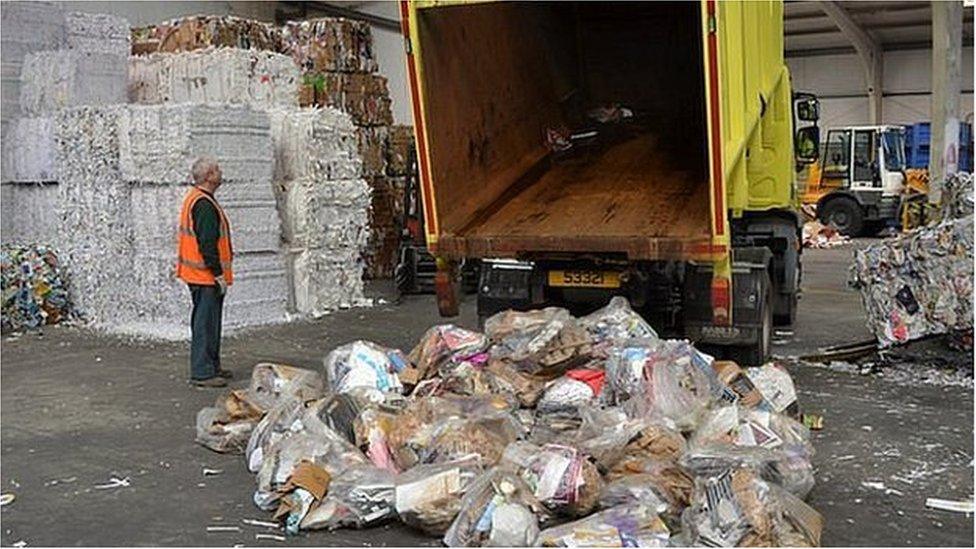'Minor' impact from Longue Hougue extension, report says
- Published

The plans would extend the current disposal site by 500m south
The impact of extending Guernsey's Longue Hougue inert waste disposal site would be "minor", according to an Environmental Impact Assessment (EIA).
The current disposal facility is expected to be full by 2022 and the States has been looking for a replacement since 2016.
However, the report concluded there would be a "substantially negative visual impact" due to coastline loss.
The proposed development would extended Longue Hougue south by 500m.
This would involve building a new breakwater linking the current outer wall to the shore at Spur point.
The area would then used to dispose of the inert waste, including stone, earth and rubble.

A satellite image of the current disposal site
About 100,000 tonnes of inert waste is produced in Guernsey every year, according to the States.
The EIA report is made up of 13 studies, including local ecology, human health and pollution, carried out over 18 months,
It acknowledges the "adverse impact" of the project on the local landscape, but concludes that the overall effect on the area would be "at worst" minor.
However, it did identify a few areas where mitigation would be necessary, including the fact the site is home to a rare species of scaly cricket.
'Protecting the environment'
The report concluded the population could be moved to one of the 11 other areas where the species lives on Guernsey.
Local resident Tony Cunningham claims the report dismisses other concerns because the area is not heavily populated.
"We will lose nearly a kilometre of our current shoreline at a time when everyone, including the States, is supposed to be protecting our natural environment."
Following the release of the report, the States' trading supervisory board will put proposals to the States in early 2020.
If these proposals are approved, the planning process would begin, including a full planning inquiry in 2021.
- Published10 September 2019

- Published2 May 2019

- Published16 March 2016
